Written By Trishna Patnaik
Introduction

Indian Handicrafts
Handicraft is about processing materials by hand with hand tools. The results can be helpful things or decorative things. The materials utilized in the product are natural, industrially processed or maybe recycled.
The models of the product are ancient, revised traditional or fashionable. Handicraft is deeply frozen in society and contributes to preserving and sending traditions.
In their product, crafters transfer an area of their cultural heritage in ideas, forms, materials and work ways, similarly as their own values, philosophy of life, fashion and self-image.
Craftspeople, conjointly known as artisans, possess technical data of materials and work ways. They’re skilled employees whose profession relies on manual skills. Their main tools are the power of work strategies and their manual skills.
Handicraft contains plenty of implicit data which grows every year, aboard with skills. The order and apprentice system has been widely used to transfer skills and implicit data.
Theme-based craft is a comprehensive, well-organized backline master of fascinating, supported the following in style five choose themes – Needle Work, tribal Crafts, fibre And Eco-friendly Crafts, Fashion Accessories and festal Decorations providing in-depth info regarding the craft, products, sellers and awarded master craft persons in these particular crafts.
India’s cultural heritage plus traditional diversity are showcased by a wide variety of handicrafts made by respectable artisans from all over our country.
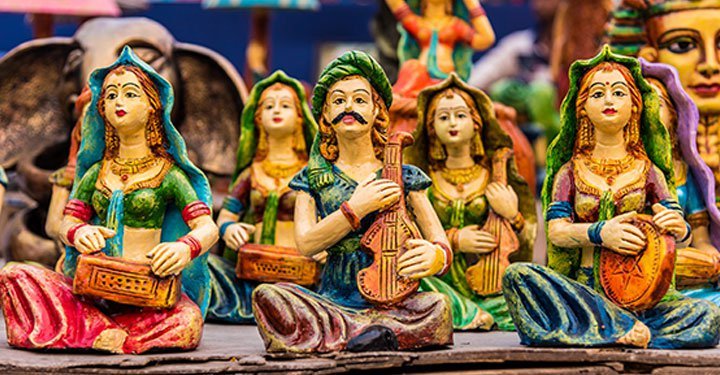
The Indian handicrafts through the passage of time have evolved through the needs of the people, changing trends and more so religious values. Indian handicrafts have stood the test of time and happen to be the most intricate art forms in the history of the world.
Thousands and thousands of local artists work hard to create exquisite pieces of crafts. The handicrafts are quite elegant looking. They are preferred by the people in order to decorate their houses, or they do make excellent gifting options.
Take a look at some of the most exquisite Handicrafts of India:
1. Indian Handicraft: Woodwork
The technique of carving makes one of humanity’s earliest creative expressions.
Certain regions in Punjab are famous for its magnificent wooden furniture. Kashmir is known for its artefacts made out of the walnut trees. The artisans of Chhattisgarh showcase wooden crafts such as masks, doors, window frames and sculptures.
Saharanpur in Uttar Pradesh is well known for its wood carving industry and Sheesham, Dudhi and Sal treed wood are used by the family artisans. They also procure and work with Teak, Mahogany and Ebony. The finish of wooden handicrafts from Saharanpur is impeccable.
Jharkhand is known for its wooden toys. The woodcarvings of Goa possess designs which are primarily floral, animal and human figures.

Bestowed with abundant forests, woodwork is a popular craft in South India. Woodwork is often done on rosewood and sandalwood. Red sandalwood from Andhra Pradesh creates cutlery, boxes and paper knives in exquisite designs.
Madurai in Tamil Nadu is popular for its amazing rosewood carvings. Karnataka is famous for beautiful elephants plus furniture made from rosewood. Sandalwood makes up for utility plus decorative items that are etched with designs of flowers, creepers, birds and animals.
Magnificent figurines of females are totally carved out of Kumbli wood in Kerala.
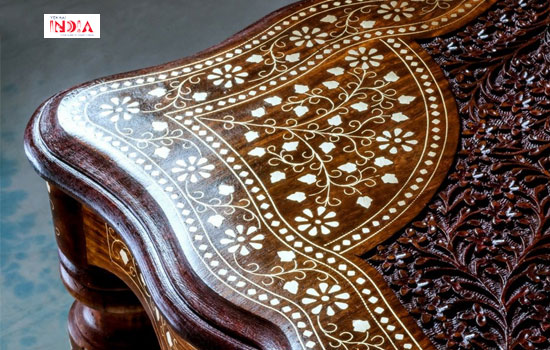
The woodwork of Dharamshala, the intricately carved Havelis of arid Barmer and Jaisalmer districts of Rajasthan, the Kasta Kari of Goa contains a feast of inspirational diversifying wooden carvings.
India showcases carving techniques of woodwork specific to its place and form.
The different states of India do contain enclaves of master craftsmen specialized in woodwork. Popular designs include religious idols, artefacts, wood carved mirrors, furniture, cupboards, tables, trays and chests.
2. Indian Handicraft: Pottery
The tradition of handmade pottery is prevailing in India since the time of the Indus Valley Civilization, clay craft or pottery is said to be one of the most primitive forms of handicrafts in India. Artists engaged in pottery are called “Kumhaars”.
The tradition of handmade pottery prevails in India since the time of Harappan Civilization.
North India is known for different kinds of pottery designs. These range from colours like orange, brown and light red in Uttar Pradesh going up to black and also dark red in the Himachal Pradesh. In Bikaner of Rajasthan there is painted pottery, Pokhran has pottery with geometrical patterns and Alwar has its Kagzi pottery. The blue pottery of Jaipur is quite famous.
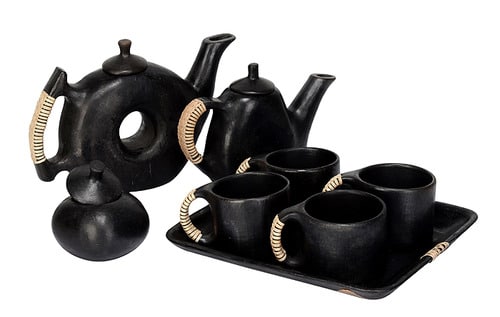
The potter occupies a unique position in the craft traditions of India. The most sensual form of all arts is pottery.
From the Ayanaar horses of Tamil Nadu to the potters of the gorgeous Kangra Valley (Himachal Pradesh). It is still to be found in a multitude of forms, shapes and sizes.
Besides, Krishnanagar in West Bengal, Bikaner, Lucknow, and Pune do prepare clay ware.
In Odisha, the Baragarh, Khurda, Keonjhar and Koraput districts have attracted widespread admiration for the creation of terracotta ware for centuries. The potters here still work by traditional potter’s wheels and till date.
3. Indian Handicraft: Stone Masonry
The fascination with stones has always been prevalent in India. The traces of this royal fascination are present in the intricately carved palaces and forts. This amazing artwork on the stone is an elegant combination of carving, engraving, sculptures and undercuts.
The preparation of simple small stone utensils to the grandiose temple commissions is a tradition of stone masonry evolving over a period of time pervading the whole of the Indian subcontinent.
The early sacred texts of art and architecture does set out the desired measurements plus techniques for sculpting. The requirements concern the quality, colour, texture, maturity, and even gender of the stone.
The well-known craftsmanship of the Silavat communities of Mason near Thar district is very enlightening. Architectural features of houses, follies, and palaces in which the Jaali work to idol making, moving to stone carving flows the dexterity offering a wealth of intricately decorated surfaces.
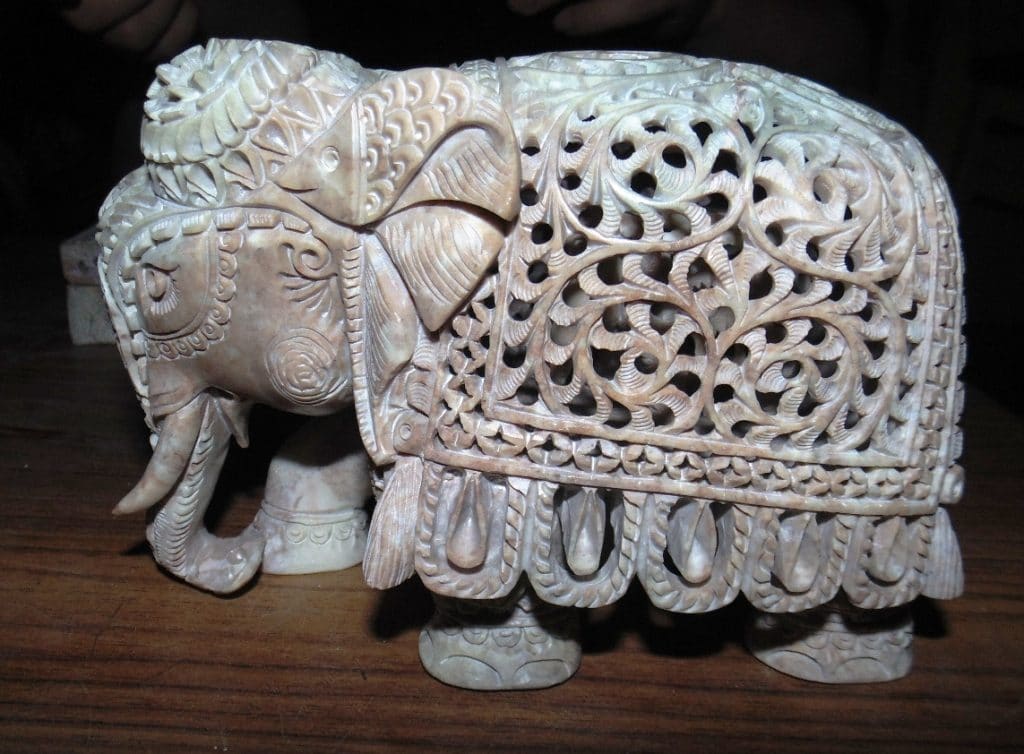
Idols of several Hindu and Jain deities are carved out of the marbles sourced from Makrana, Bhainslana, and Jhirri, a village in the Alwar district. The renowned Taj Mahal is a fine example of the pearly clarity, lustre, and very fine texture of the marble been utilized to maximum effect.
Prevalence of rock carving, one of the primitive rock art can be seen in the states of Rajasthan, Jaipur, Odisha and Nagpur.
Rajasthan, Jaipur and Madhya Pradesh are also famous for marblecarvings. The specialty of Madhya Pradesh is the art of green stones.
Pattharkatti is the unique rock craft of Gaya.
The ancient temples of Odisha are world famous examples of rock crafts of India.
Uttar Pradesh in India is still a rich centre of stone carving and handicrafts. It is common to find plates and boxes, made especially in Agra. These products are of the highest quality, and often employ floral patterns from the Taj Mahal.
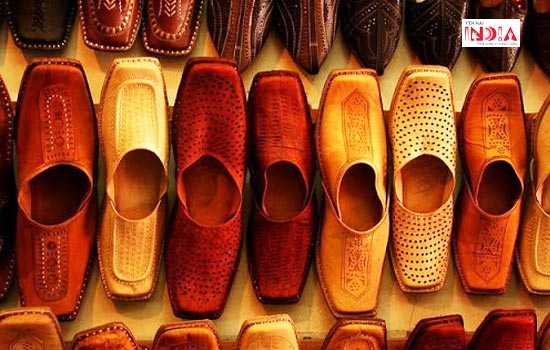
4. Indian Handicraft: Leather
India is famous worldwide for its amazing leather products.
The leather craft tradition dates back to Indus Valley civilization. The age-old convention of any leather skill in India has often proved its worth by ancient sages and ascetics. In the past, leather was not just used in making clothes and footwear but in making caps, bags, saddles, and shield etc.
Madhya Pradesh is very well-known for its leathercraft. Various leather items are produced like shoes, bags and garments. Maharashtra is quite famous for its leather shoes called the Kolhapuri chappals.

5. Indian Handicraft: Jute
India is a center for the jute handicrafts for people all over from the globe.
Jute craftsmen have moved forward to create a worldwide position in the field of Jute Handicrafts.
The huge range of the jute crafts do include bags, office stationeries, bangles and other jewellery, footwear, wall-hangings and so many more. West Bengal, Assam and Bihar, happen to be the jute producers and do pilot the jute handicrafts market in India.
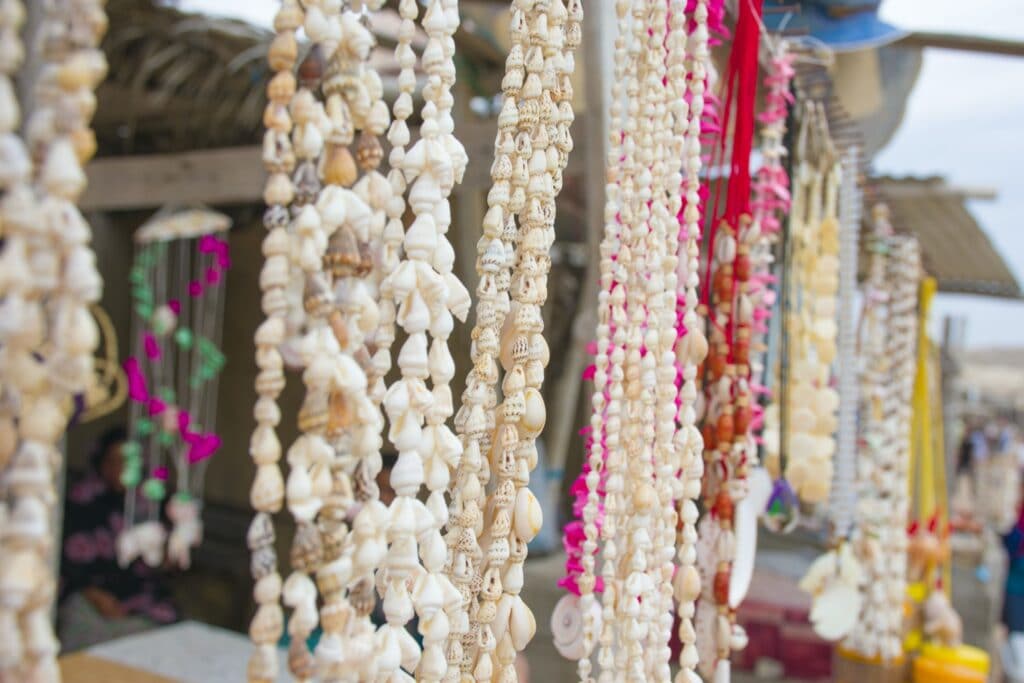
6. Indian Handicraft: Shell
There happen to be three kinds of shell from which the shell handicrafts are made in India – conch shells, tortoise shell and sea shell.
Many goods such as bangles, forks, decorative bowls, lockets, curtains, chandeliers, mirror frames, table mats, etc. are the products of the shell handicrafts.
The places located on the seashore like Gulf of Mannar, Goa, Odisha, etc. are the very places for shell handicraft.
These art pieces are found in abundance here at a much lower price.
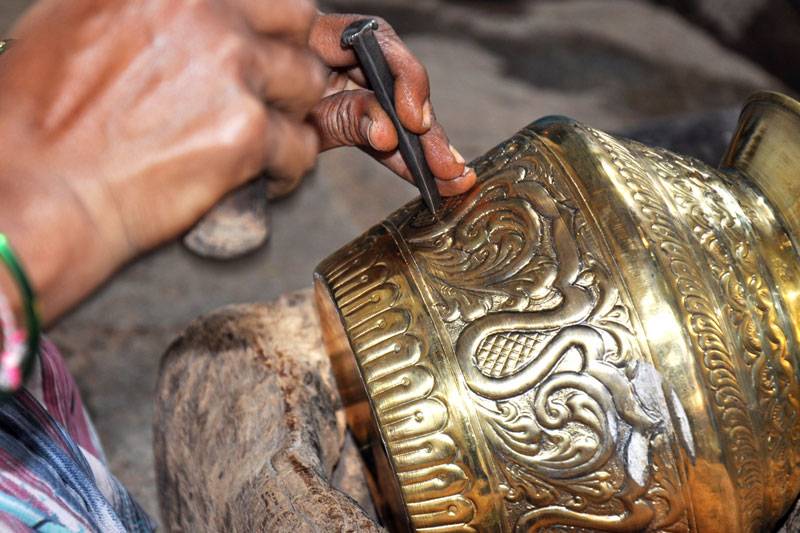
7. Indian Handicraft: Metal Handicrafts
Metal items are known to be durable and longer-lasting and that could be the reason why metal (brass, bidri) handicrafts flourished and burgeoned so well through the ages.
The techniques used to work the metal are millenarian, and most of them are still used in the town of Rajasthan, Bidar, Pembarthi, and Kamrup. Producing metalware is a laborious task, that requires a lot of skill and patience.These artisans dealing with brass handicrafts are distinctively known as “Kansaris”.
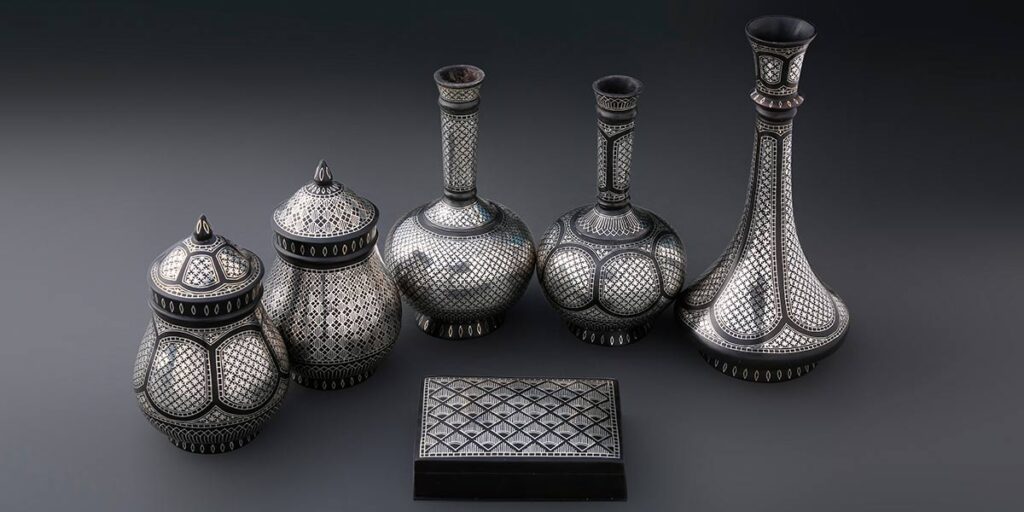
Bidri
Bidar is the center for the manufacture of these unique metal handicrafts which developed during the 14th century, where ‘bidriware’ gets its name. This metal is a blackened alloy of copper and zinc inlaid with fine sheets of pure silver.
This makes it one of the most important south Indian handicrafts exports and is commonly prized as a symbol of wealth in many places across the world. So many products are made from the metal, including pitchers, bangles, boxes, statues, masks, buttons, and many more.
Tradition is to inlay various leaves, flowers, human figures, geometric designs, and stylized poppy plants with flowers.
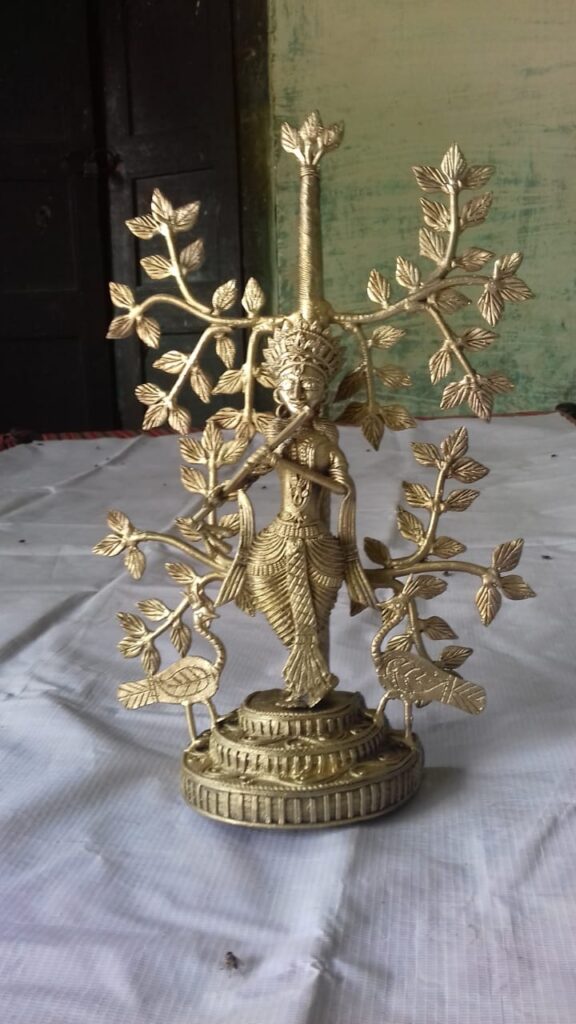
Pembarthi Handicraft
Pembarthi is a small village in the state of Telangana, and it is popular for its production of sheet metal artworks of extremely high quality.
This kind of brass work developed during the empire of the Kakatiyas, who used sheet metal art to adorn their temples.
Dhokra
Dhokra is a non-ferrous metal casting using the technique of lost-wax casting, a technique used in India for more than 4,000 years. The product of dhokra artisans are known for their simplicity and folk motifs, the horse, elephants, measuring bowls, and religious images are extremely treasured.
Kamrupi
Kamrupi produces some brass and bell metal products that are famous all over the country for their exquisite form and utility. Some of the main items produced by this industry are water pots, dishes, bowls, and cymbals. In Guwahati, one can visit the State Museum with its extremely rich collection of items made of gold, silver, and copper.
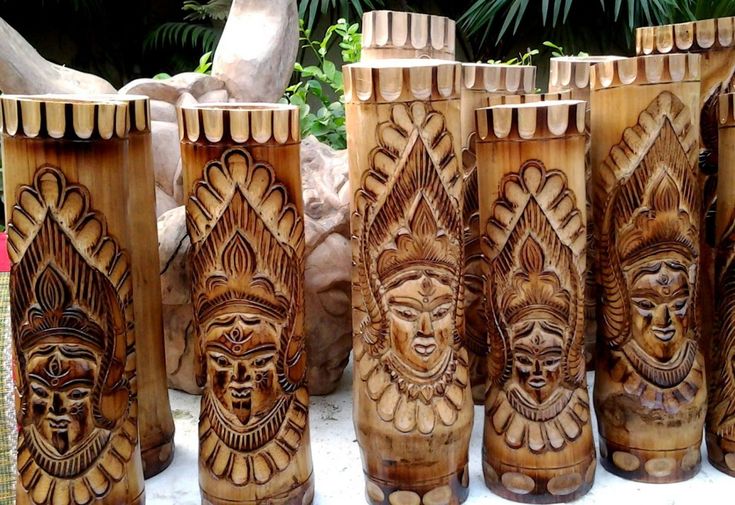
8. Indian Handicraft: Bamboo Handicrafts
Handicrafts that are made by using bamboo are quite eco-friendly crafts made in India. Bamboo handicrafts are predominantly prepared in West Bengal, Assam and Tripura.
The diverse items made from bamboo are baskets, dolls, toys, furniture, mats, wall-hangings, crossbows, jewellery boxes and many more. Creating this handicraft of unique forms, amazing designs, requires a great deal of knowledge, manual skills and excellent craftsmanship.
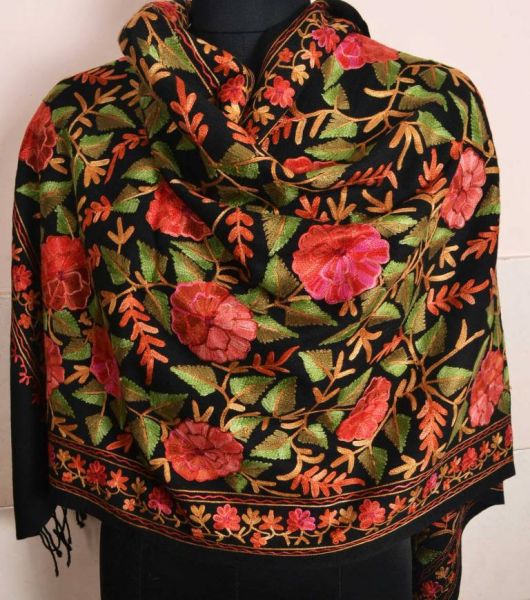
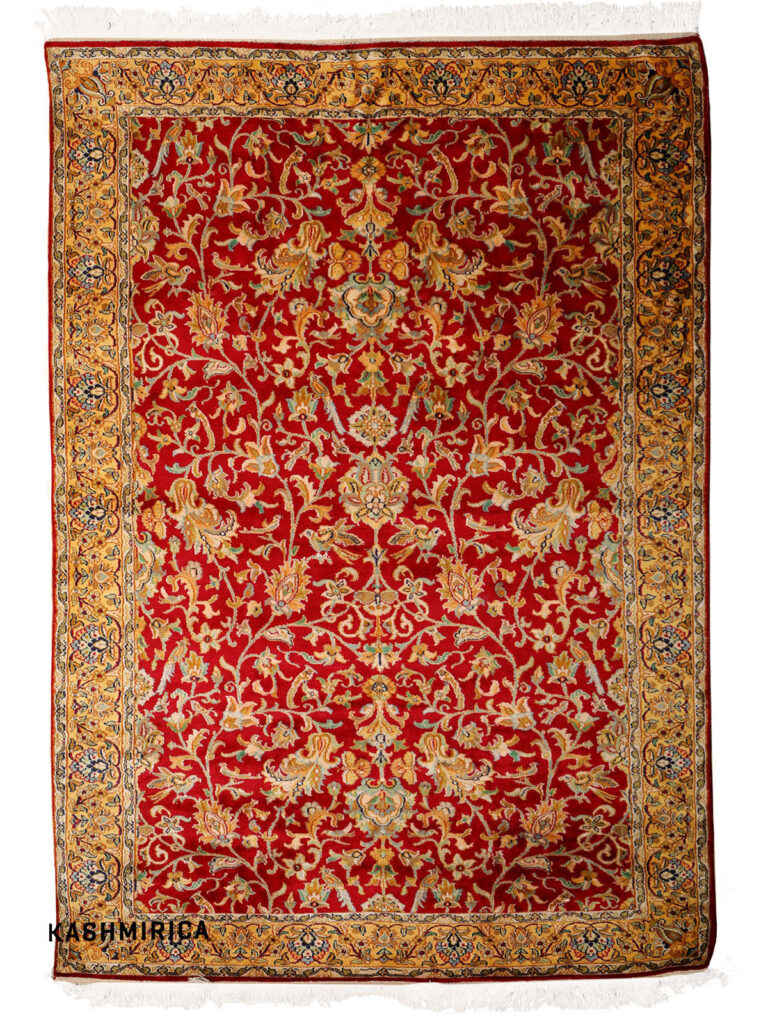
9. Indian Handicraft: Handloom Weaving
Panipat Weaving
Panipat is famous as the “City of Weavers” because thousands of weavers live there and produce fabrics for home furnishing. Panipat today exports 50% of the country’s total handloom products and meets 75% of the blanket requirement for the Indian Army.
Kullu Shawls
Kullu in Himachal Pradesh is known for good quality woolen shawls. Kullu shawls are handwoven shawls having multicolored geometric pattern borders. Pashmina wool is obtained from Pashmina goats.
Knotted Carpets
Carpets are one of the finest crafts of Kashmir. These are hand-knotted floor coverings made using wool or silk yarns. Carpet weaving in Kashmir is highly influenced by Persian art, although motifs also include local flora and fauna. Kashmir carpets come in various sizes and designs and are highly durable.
Kashmiri Shawls
Kashmiri Shawl is the most loved product of Kashmir Valley. Based on production technology, there are two types of Kashmiri shawls:-
- Kani Shawls, which are woven on a loom.
- Sozni Shawls, which are needle embroidered.
The raw materials required for weaving shawls are shahtoosh, pashmina, and pure merino wool. These shawls are known all over the world for their softness, warmth, and beauty.
Ladakh Carpets
Carpet weaving is the main craft of Ladakh. Carpets are made on wooden looms and are called Khabdan in the local dialect. The main motifs used in the carpets are the dragon, the snow lion, and the Chinese wall. These are used for personal use in the living rooms and prayer rooms of the people living in Ladakh.
Pochampally Ikats
Ikat weaving is a resist-dyeing technique in which the yarn is tie-dyed before weaving. After the introduction of Ikat weaving in Pochampally Village, it came to be known as Pochampally Ikat.
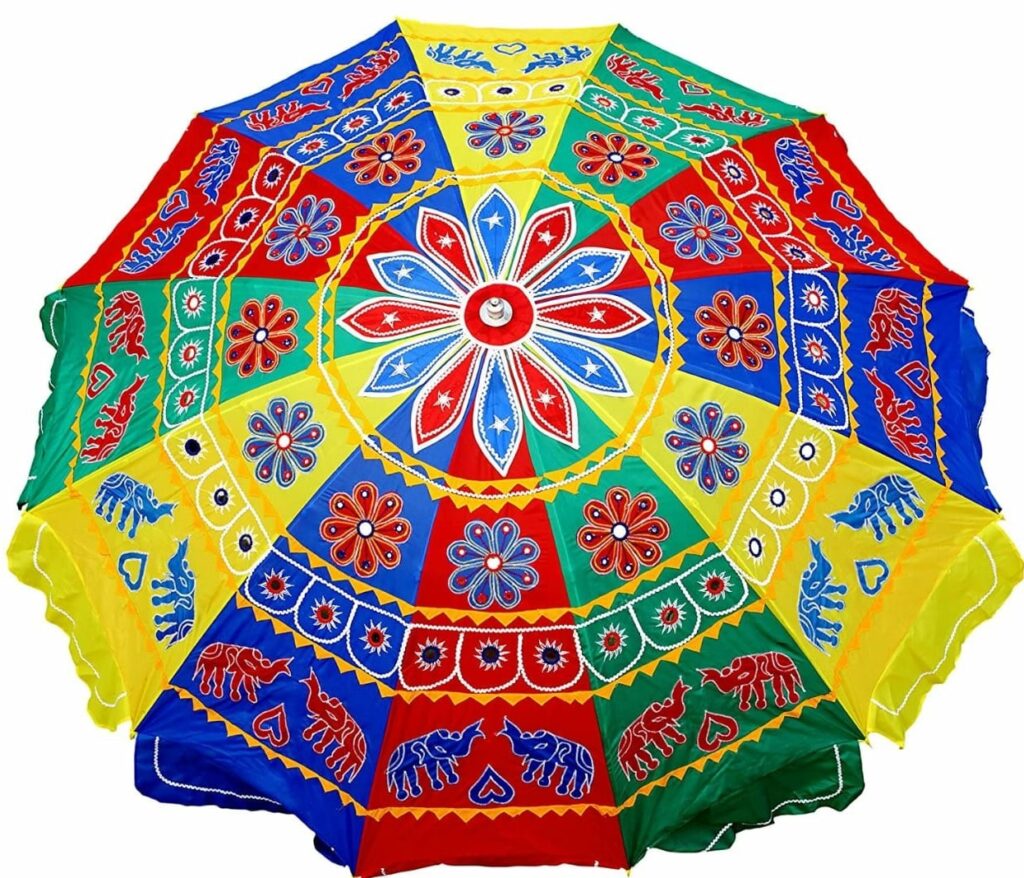
10. Indian Handicraft: Paintings
Pipli Art
Traditionally, Pipli appliqué works featured motifs such as flowers, birds, animals (the elephant and peacock dominate), mythical and mythological characters, as well as geometric patterns. The appliqué works are further embellished with embroidery and mirrors.
Pattachitra
Pattachitra style of painting is one of the oldest and most popular art forms of Odisha. Pattachitra is thus a painting done on canvas, and is manifested by rich colourful application, creative motifs, and designs, and portrayal of simple themes, mostly mythological in depiction. Now artists have started painting on other medium, including coconut shells, wooden boxes etc.,
Did you like the article?
Do leave us your feedback,
Thank you!
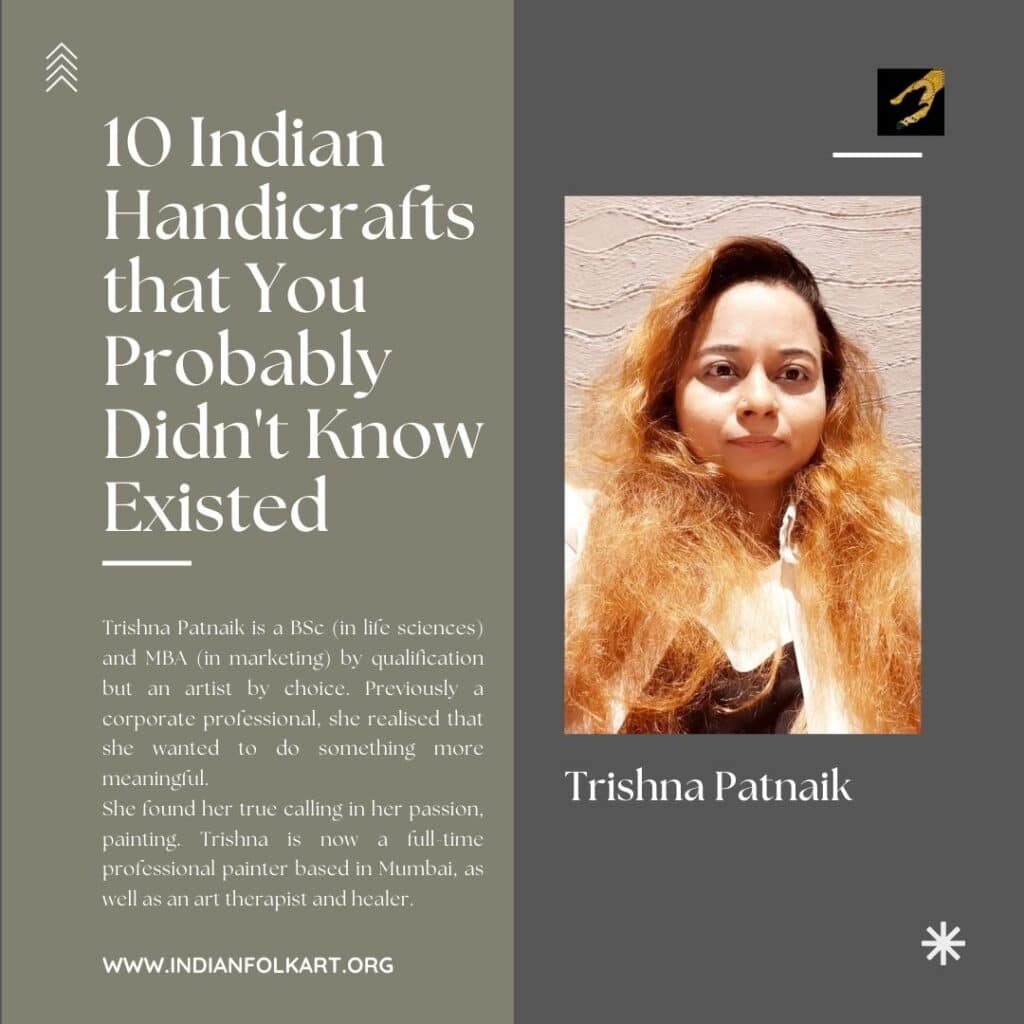

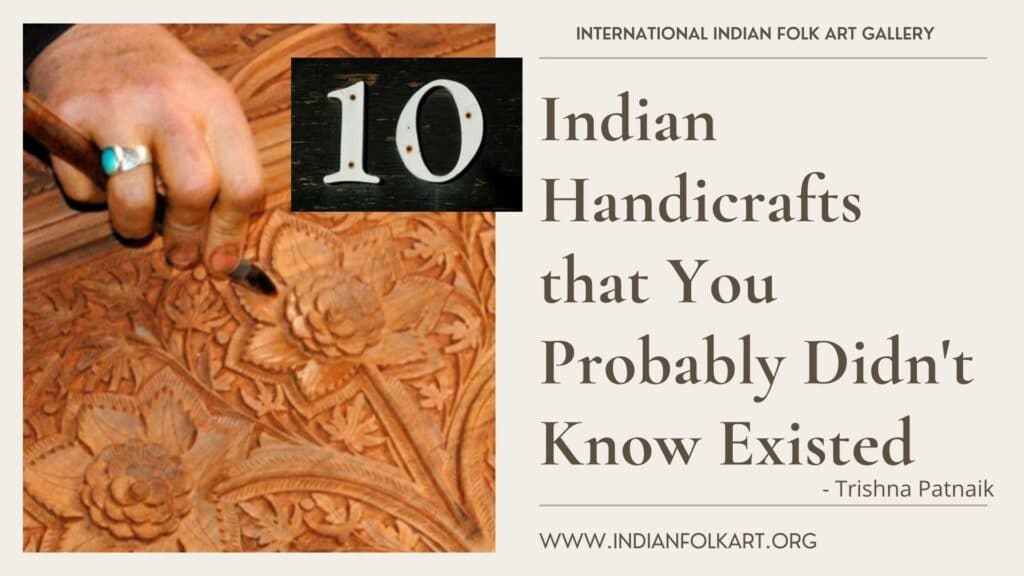
0 comments on “10 Indian Handicrafts that You Probably Didn’t Know Existed”